| Home; Aviation; Cameras; Fiction; Health&Safety; Military; MS-Apps; Non-Fiction; Submarine; Technical; Trains; Watches; Transportation |
|---|
Subject: SR-71 - History
Edited by David Barth, November 21, 2008
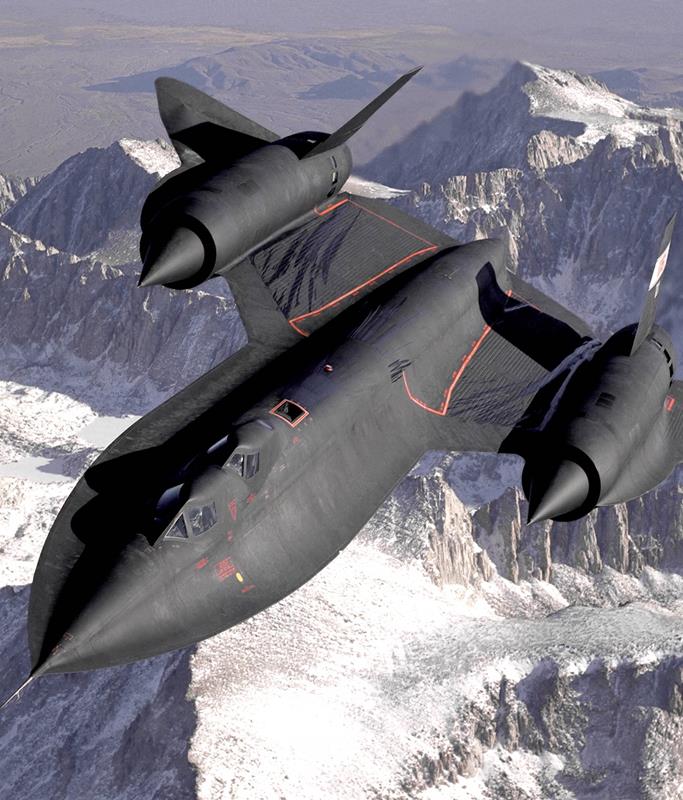 |
| SR-71 two-cockpit trainer version in flight. There were three models: SR-71B (two of these) and one SR-71C which is on display at Hill AFB. |
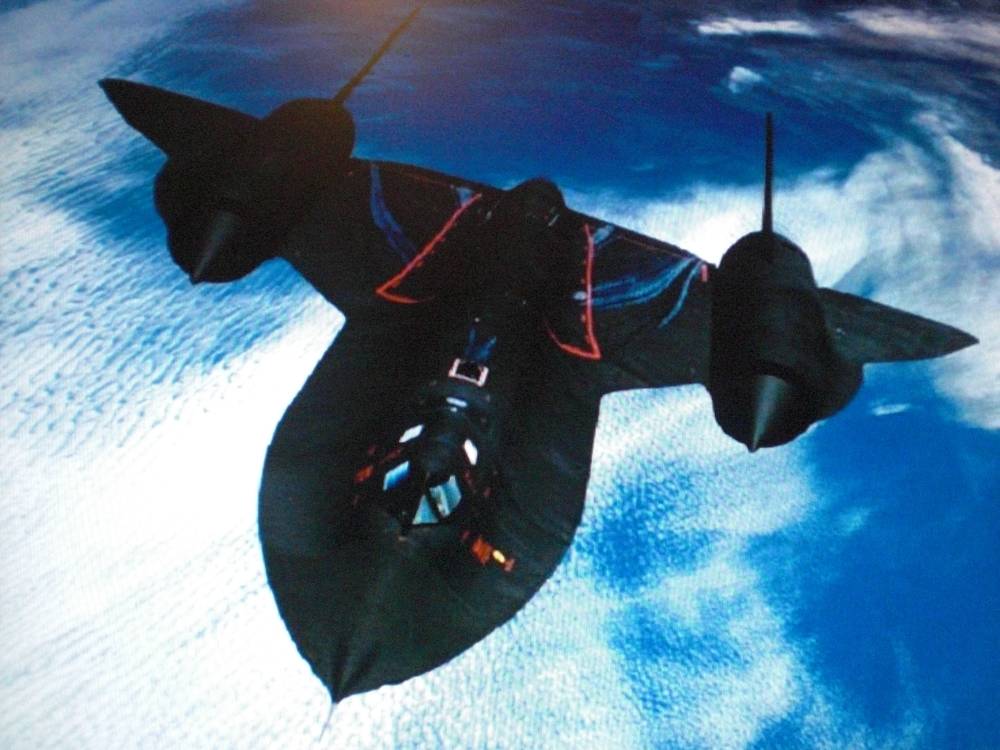 |
| SR-71 in flight. This is the reconnaissance version of which 29 were built. |
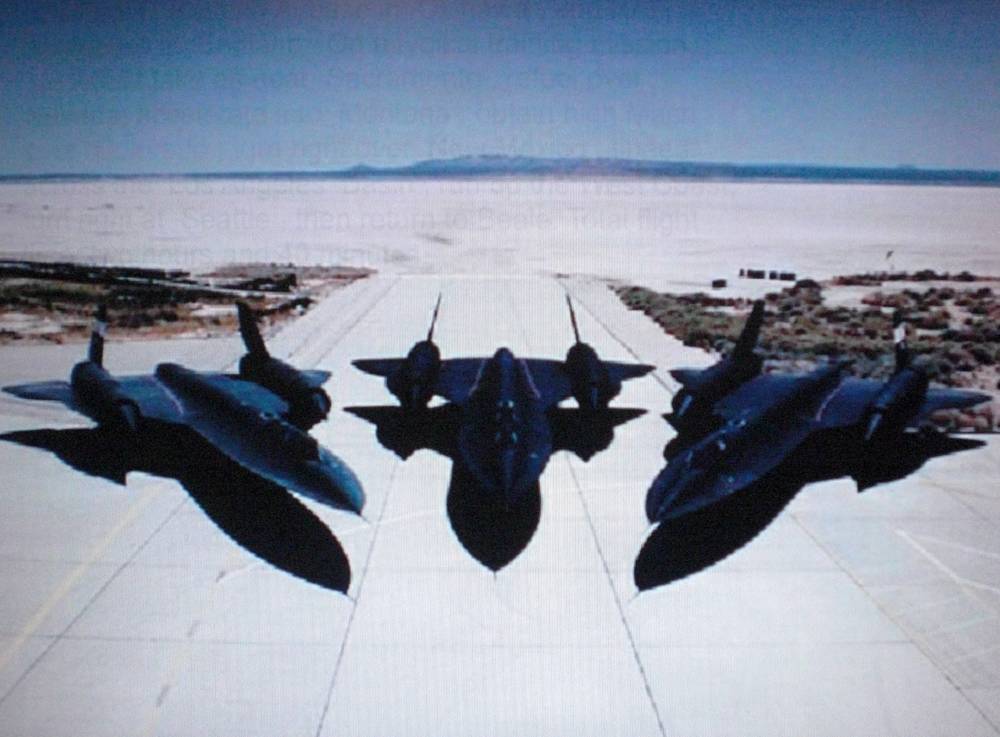 |
| SR-71 aircraft, perhaps at Groom Lake (Area 51) where the prototypes were test flown. |
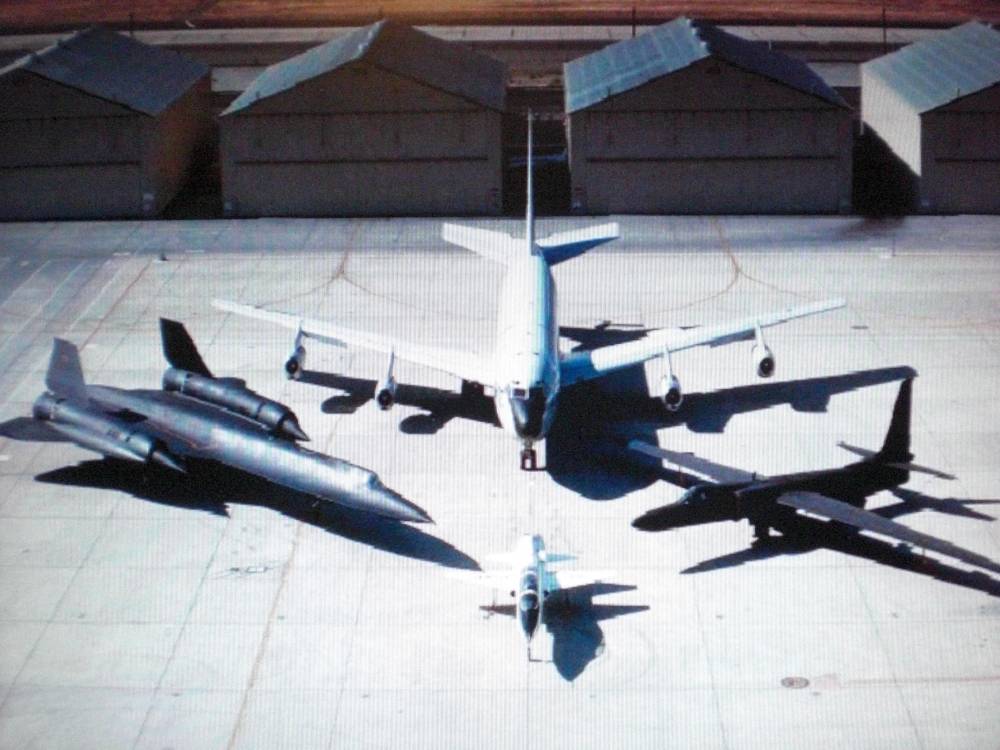 |
| From Left: SR-71, KC135Q tanker that carried the special JP-7 fuel, U2, and a T-38 used by SR-71 pilots to maintain their flying skills and as a chase plane when an SR-71 was low and slow in the immediate area. |
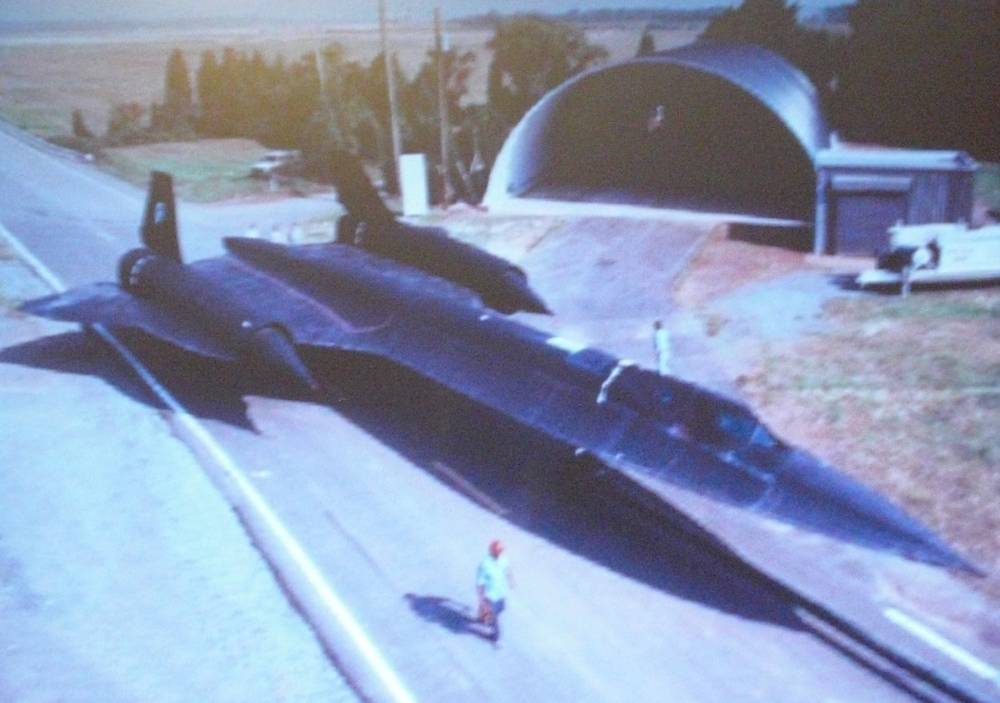 |
| SR-71 at a corrugated steel Quonset revetment. |
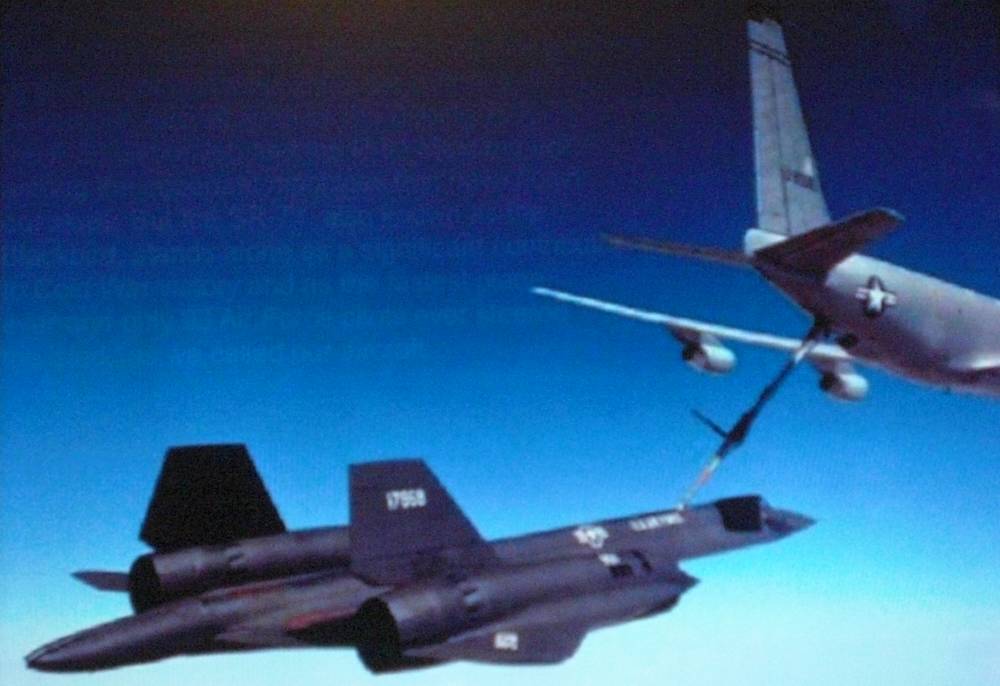 |
| SR-71 tanking. Taking on a full fuel load took about 15 minutes. |
The SR-71 was the creation of Kelly Johnson, Lockheed, Eisenhower, and the Air Force. It was envisioned in the 1950's, first flew in the early 1960's, retired in the 1980's, and briefly brought back in the 1990's.
In all, 13 units of the first version, the single seat A-12, were built, and 32 articles of the two-seat (Pilot and Reconnaissance Systems Officer) SR-71 units were built. Five A-12s were lost, and one is stored. Twelve two-seater SR-71s were lost. The remaining 27 are on display around the USA. One is at the old Castle AFB museum at Merced, California with 50 other classic warplanes. Others are in NY, OR, OH (Wright-Patterson AFB Museum), DC (National Air and Space Museum), WA (Boeing Air Museum at Boeing Field, south of Seattle), etc.
The A-12 was designed as a high-speed fighter-interceptor, but that mission was deemed less important than reconnaissance, so the two-seat RS-71 (later, SR-71) was developed from the A-12 airframe.
 |
| SR-71 aircraft |
Kelly Johnson also designed the U-2 Reconnaissance aircraft, the predecessor to the SR-71. The U-2 was built by Kelly's Lockheed "Skunk Works" in 1955 and flew operationally in 1956. Kelly Johnson thought the USSR would shoot it down in 18 months, but it flew until Gary Powers was downed on 1 May 1960.
 |
| SR-71 parked with KC-135 tanker, T-38 trainer/chase plane, and a U-2 |
Before Powers was shot down, Kelly Johnson already had the go-ahead from President Eisenhower to design and build the A-12, which first flew in 1962. President John F. Kennedy kept the manufacture of it active. No one told President Kennedy's Vice President, Lyndon Baines Johnson, about the SR-71 project because everyone knew he would spill the secret. He wasn't told of it until the week after Kennedy was shot. Within a matter of months, Johnson gave out the secret.
Johnson's announcement of the plane during a speech caused problems because the plane was originally called the RS-71, and when he announced it, he accidentally reversed the letters, calling it the SR-71. To save face, Lockheed and the US government had to change the name on all of the documents from "RS-71" to "SR-71."
 |
| SR-71 in flight |